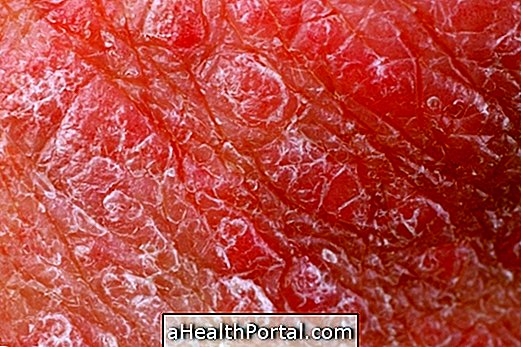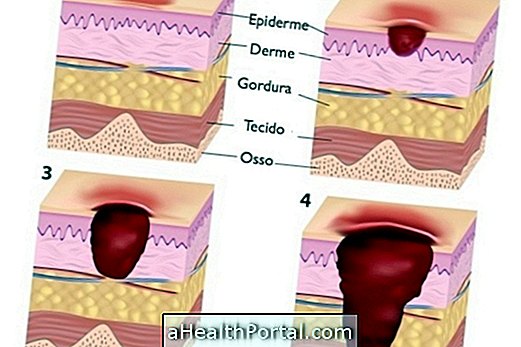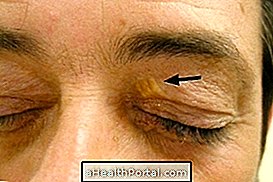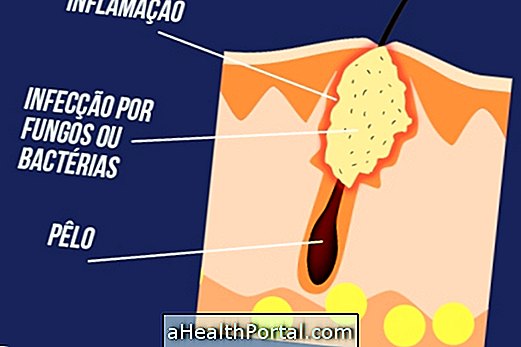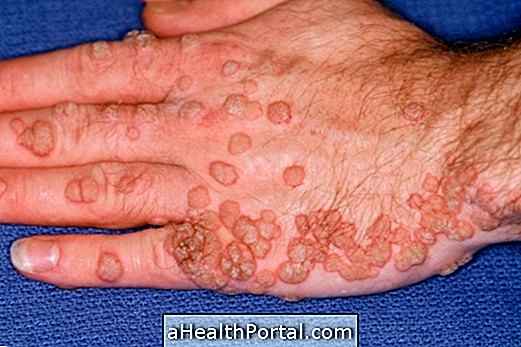Squamous cell carcinoma, also known as SCC or squamous cell carcinoma, is a type of skin cancer that occurs mainly in the mouth, tongue and esophagus and causes signs and symptoms such as wounds that do not heal, that bleed easily and rough spots on the skin. skin, with irregular edges and reddish or brown color.
In most cases, squamous cell carcinoma develops because of excessive exposure to ultraviolet rays, emitted by sunlight or tanning beds, and people with lighter skin and eyes are at greater risk of having this type of cancer.
The treatment for squamous cell carcinoma depends on the size of the lesion and the severity of the cancer cells and, in general, in less aggressive cases, a small surgery is performed to remove the tumor. Therefore, when skin lesions appear it is important to see a dermatologist, because the sooner the diagnosis is made, the greater the chances of a cure.

Main signs and symptoms
Squamous cell carcinoma appears mainly in the regions of the mouth, however, it can appear in any part of the body that has been exposed to the sun, such as scalp and hands, and can be identified through signs such as:
- Wound that does not scar and bleeds easily;
- Reddish or brown stain;
- Rough and protruding skin lesions;
- Swollen and hurting scar;
- Lesions with irregular edges.
Therefore, it is always important to pay attention and check for the presence of spots on the skin, as many times, some spots caused by the sun, can progress and become cancer, as happens in actinic keratoses. Find out more about what it is and how to treat actinic keratosis.
In addition, when checking for the appearance of skin lesions, it is necessary to seek assistance from a dermatologist, as an examination with a high-powered microscope will be done to check the characteristics of the stain and a skin biopsy may be recommended to confirm whether it is cancer.
Classification of squamous cell carcinoma
This type of cancer can have different classifications according to the characteristics of the tumor, the depth of the lesion and the invasion of cancer cells in other parts of the body, such as in the lymph nodes and can be:
- Little differentiated: it occurs when the diseased cells are aggressive and grow quickly;
- Moderately differentiated: it is an intermediate phase, in which the cancer cells are still multiplying;
- Well differentiated: it is the least aggressive and happens when cancer cells are similar to healthy skin cells.
There is also a classification for cases in which the tumor is very deep and affects various skin structures, which is invasive squamous cell carcinoma, so that it needs to be treated quickly so that it does not grow any more and does not cause metastasis. See more how metastasis happens.

Possible causes
The causes of squamous cell carcinoma are not well defined, however, in most cases, the appearance of this type of cancer is related to excessive exposure to ultraviolet rays, by sunlight or through tanning beds.
Cigarette use, non-moderate alcohol intake, genetic predisposition, infections caused by human papillomavirus (HPV) and contact with chemicals, such as toxic and acidic vapors, can also be situations that lead to the appearance of this type of skin cancer.
In addition, some risk factors may be associated with the appearance of squamous cell carcinoma, such as having fair skin, light eyes or naturally red or blond hair.
How the treatment is done
Squamous cell carcinoma is curable and the treatment is defined by the dermatologist, considering the size, depth, location and severity of the tumor, as well as the person's health conditions, which may be:
- Surgery: consists of the removal of the lesion through a surgical procedure;
- Cryotherapy: it is the removal of the tumor through the application of an extremely cold product, such as liquid nitrogen;
- Lasertherapy: it is based on eliminating the cancer lesion by means of laser application;
- Radiotherapy: constitutes the elimination of cancer cells through radiation;
- Chemotherapy: is the application of drugs through the vein to kill tumor cells;
- Cell therapy: medications are used that help the body's immune system to eliminate squamous cell carcinoma cells, such as the medicine pembrolizumab.
Radiotherapy and chemotherapy are more indicated in cases where squamous cell carcinoma has affected several parts of the body, including the bloodstream, and the number of sessions, the dose of medications and the duration of this type of treatment will depend on the doctor's recommendation. .
Was this information helpful?
Yes No
Your opinion is important! Write here how we can improve our text:
Any questions? Click here to be answered.
Email in which you want to receive a reply:
Check the confirmation email we sent you.
Your name:
Reason for visit:
--- Choose your reason --- DiseaseLive betterHelp another personGain knowledge
Are you a health professional?
NoMedicalPharmaceuticalsNurseNutritionistBiomedicalPhysiotherapistBeauticianOther
Bibliography
- LOURENÇO, Simone de Q. C. et al. Histopathological Classifications for Squamous Cell Carcinoma of the Oral Cavity: Review of Proposed Systems. Brazilian Journal of Cancerology. Vol.53, n.3. 325-333, 2007
- ALAM, Murad et al. Guidelines of care for the management of cutaneous squamous cell carcinoma. J Am Acad Dermatol. Vol.78, n.3. 560-578, 2018
- AMERICAN ACADEMY OF DERMATOLOGY ASSOCIATION. Skin cancer: squamous cell carcinoma treatment. 2019. Available at:. Accessed on 19 Nov 2019
- TEIXEIRA, Ana Karine M. et al. Squamous cell carcinoma of the oral cavity: an epidemiological study at the Santa Casa de Misericórdia in Fortaleza. Brazilian Journal of Cancerology. Vol.55, n.3. 229-236, 2009
- VILLARROEL, Rodrigo U. et al. Chemotherapy treatment for locally advanced skin squamous cell carcinoma. Revista Brasileira de Oncologia Clínica Vol. 11, no 40 April / May / June 2015. Vol.11, n.40. 87-90, 2015
